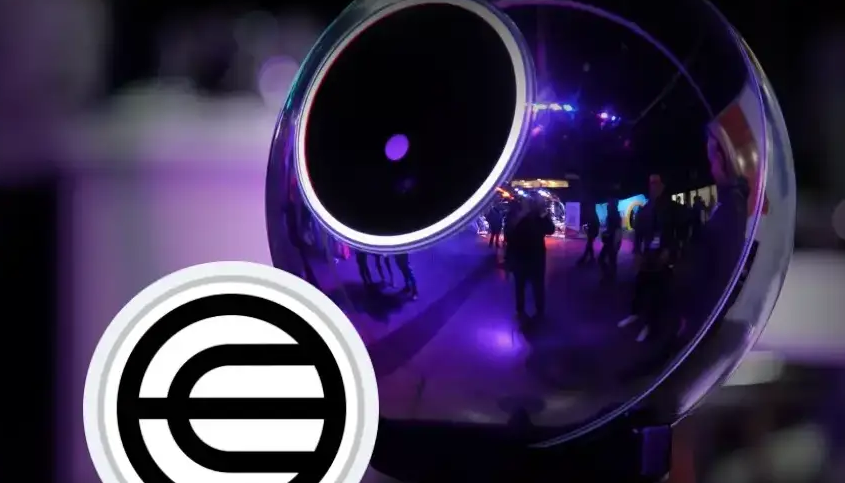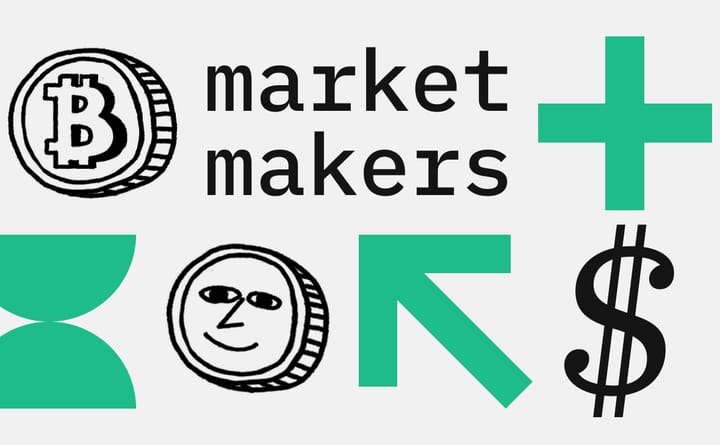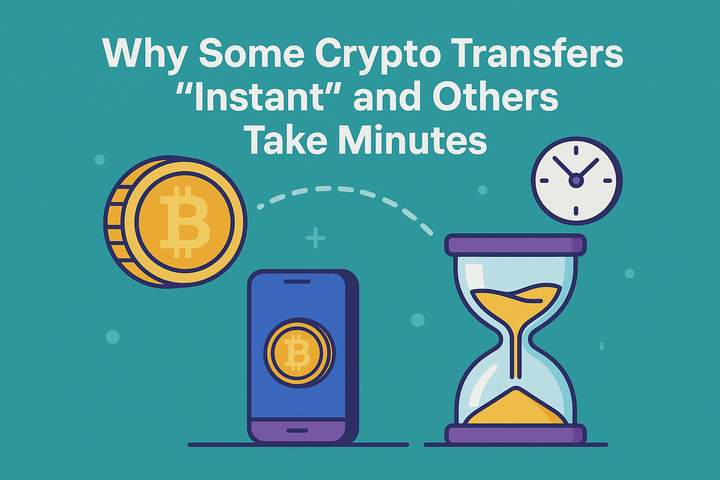Why Worldcoin Is $135 Million: Scaling World ID, Biometric Identity, and the Future of Digital Humanity

In a world where digital doubles are becoming increasingly indistinguishable from real people, and artificial intelligence generates millions of fake accounts, the issue of identity verification on the Internet is becoming a matter of trust, sovereignty, and the survival of digital civilization. Against this backdrop, the Worldcoin project, led by Sam Altman, co-founder of OpenAI, has raised $135 million in investment to scale its ambitious solutions: World ID and the Orb network of devices. These funds became part of one of the largest crypto rounds of 2023.

What is behind this initiative and why are venture giants investing hundreds of millions of dollars in iris scanning technology? Let's try to figure it out.
What is Worldcoin and why is it needed
Worldcoin is a cryptographic and biometric project aimed at creating a global digital identity that confirms that the user is a real person, not an artificial intelligence, bot, or clone. Its architecture includes three key elements:
World ID is a decentralized identity document on the blockchain. With its help, a person can pass a “proof of personhood” check without revealing their identity.
Orb is a specialized device in the form of a metal sphere that scans the iris of the eye and generates a unique biometric hash.
Worldcoin Token (WLD) is the native token of the ecosystem, which can be used as a reward for verification or as a universal means of digital payments.
Worldcoin’s mission sounds ambitious: to create a fair digital economy where every person has the right to a basic digital income and a verified identity, regardless of citizenship, passport, or location.

Funding Round: Who Gave $135 Million and Why It Matters
In May 2023, Tools for Humanity, the company behind Worldcoin, completed a Series C funding round worth $135 million. The round was led by Blockchain Capital, and the following venture funds also took part:
1. Andreessen Horowitz (a16z Crypto)
2. Bain Capital Crypto
3. Distributed Global
This indicates a high degree of trust from investors, despite the skepticism of part of the crypto community. It is separately emphasized that a significant part of the funds will be directed to:
· expanding the Orb network in countries with limited access to digital identification;
· developing new features for World ID;
· strengthening the security infrastructure and transparency of the protocol;
· promoting the project globally, especially in countries with rapidly growing populations.

World ID: the next generation of digital identity
World ID is being created as an alternative to traditional government ID cards, but without the need to reveal your name, date of birth, or other personal data. Instead, it uses proof of uniqueness through biometrics and zero-knowledge cryptographic proofs.
Advantages of the World ID approach:
· you can prove that you are a person without revealing who you are;
· anyone can get a World ID for free;
· the system is built on open source code and supports integration with dApps and DAOs;
· identity remains under the user's control.
In the future, World ID may become the standard for logging into applications, voting, receiving grants, and even identifying in metaverses.
Worldcoin Overview Table
|
Category |
Details |
|
Project
Name |
Worldcoin |
|
Founded
By |
Sam
Altman (co-founder of OpenAI), Alex Blania, Max Novendstern |
|
Core
Mission |
Build a
global digital identity system and universal access to decentralized finance |
|
Recent
Funding |
$135
million (Series C round) |
|
Funding
Date |
May
2023 |
|
Lead
Investor |
Blockchain
Capital |
|
Other
Investors |
a16z
(Andreessen Horowitz Crypto), Bain Capital Crypto, Distributed Global |
|
Use of
Funds |
Scale
World ID, expand Orb device network, improve infrastructure, increase global
accessibility |
|
Key
Components |
|
|
World
ID |
Decentralized
digital identity using zero-knowledge proofs (ZKPs) |
|
Purpose
of World ID |
Proof
of personhood without revealing personal data |
|
Orb |
Biometric
hardware device that scans iris and generates a secure hash |
|
Orb
Availability |
More
than 20 countries (e.g., Argentina, Kenya, Portugal, India, Chile, USA) |
|
WLD
Token |
Native
token of the Worldcoin ecosystem |
|
Technical
Concepts |
|
|
Biometric
Hashing |
Iris
scan → encrypted hash → stored on-chain (not reversible to image) |
|
Zero-Knowledge
Proofs |
Prove
uniqueness and humanness without identity disclosure |
|
Open-Source
Protocols |
Yes —
available for developers and 3rd-party integration |
|
Web3
Integration |
Can be
used in DAOs, voting, Sybil-resistant airdrops, and DeFi access |
|
Real-World
Applications |
|
|
Sybil
Resistance |
Prevent
multiple identities from abusing airdrops or votes |
|
Online
Authentication |
Enter
platforms as verified human (no need to reveal name) |
|
Digital
Public Goods |
Access
digital basic income or public services |
|
Social
Media Tools |
Combat
bots, spam, and fake accounts |
|
Controversies
& Criticism |
|
|
Privacy
Concerns |
Biometric
data handling, local storage, and user consent debates |
|
Centralization
Risks |
Worldcoin
ecosystem largely controlled by one core company (Tools for Humanity) |
|
Geopolitical
Sensitivities |
Deploying
in low-income countries raises ethical and equity questions |
|
2025
Roadmap |
|
|
Orb
Expansion |
1000+
new devices worldwide |
|
World
ID Adoption |
Integration
with Web3 apps, governments, and NGOs |
|
Privacy
Improvements |
Stronger
encryption, user ownership of ID data |
|
Open
Development |
Broader
developer ecosystem, SDKs, and transparency |
|
Vision
Statement |
"One
person, one identity — globally, securely, and fairly" |
|
Ultimate
Goal |
Establish
a universal proof-of-personhood standard in the AI era |
Orb: what is this “ball” and how does it work
Orb is a portable device the size of a football. It is equipped with cameras and an iris scanner that read the unique pattern of the eye. After scanning, a biometric hash is created that cannot be restored back to an image and is used to create a World ID.
Orb:
· does not store original iris scans;
· uses local encryption and deletes the original images after ID generation;
· works autonomously and can be used in remote regions.
To date, the Orb network has already been deployed in more than 20 countries, including Argentina, Kenya, India, Portugal, the United States, and Chile. However, large-scale distribution requires hundreds of new devices and logistics infrastructure - this is what the attracted investments will be used for.

Why is this needed right now: AI, bots, and digital chaos
Since 2022, the amount of AI-generated content on the Internet has increased several times. GPT models create texts, images, voices, and even fake identities. Bots can fill out online forms, register on websites, participate in drops and votes. The problem of “bots in a human mask” is especially acute in the crypto space, where the same users can circumvent the rules and receive disproportionate benefits.
World ID offers a universal filter of humanity, which will become a necessary element of digital ethics:
1. for social networks - the fight against fakes;
2. for DAO - fair voting;
3. for decentralized applications - protection from “Sybil attacks”;
4. for governments - the potential for digital citizenship and aid distribution.
Criticism and concerns
Worldcoin has already become the subject of numerous discussions and investigations. The main complaints are:
Privacy
Some experts believe that collecting biometric data is a risk, even if the company promises encryption and deletion of original images. Suspicions are raised by both the physical security of Orb and the possibility of tracking users in the future.
Inequality
Although the project declares global coverage, in practice Orb is only available in some countries and is more often installed in poor regions, where users are willing to sell their biometric data for a small amount.
Centralization
Despite statements about decentralization, the project architecture is still heavily dependent on one company — Tools for Humanity, which is contrary to the spirit of Web3.

What's next?
According to the team, by mid-2025, Worldcoin plans to:
· Launch more than 1,000 new Orb devices;
· Integrate World ID into dozens of Web3 applications;
· Form partnerships with governments and NGOs;
· Release large-scale updates on privacy and decentralization of the network.
If everything goes according to plan, World ID could become the new standard of digital identification in a world where “I am a human” is no longer an obvious fact, but a necessary proof.
Conclusion
Raising $135 million is not just a funding round, but a bet that humanity needs a new model of digital identity. Worldcoin offers a controversial but technologically advanced solution that could radically change the approach to online trust, access to services, and digital rights.
The future will tell whether World ID will become a global passport of the Web3 era or remain a futuristic experiment at the intersection of cryptography and biometrics. But it is already clear: the fight for “proof of humanity” has begun, and the stakes in it are the very definition of who we are in the digital world.



Comments ()